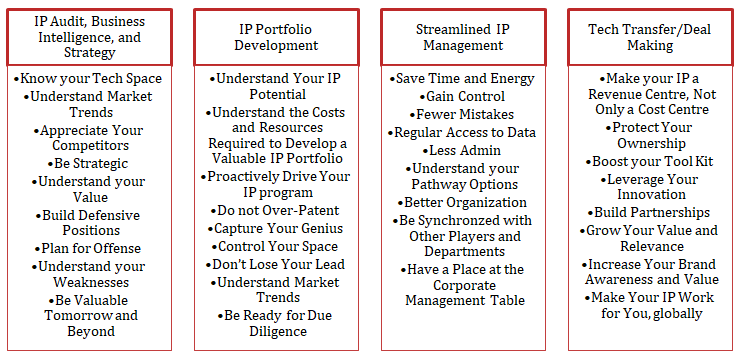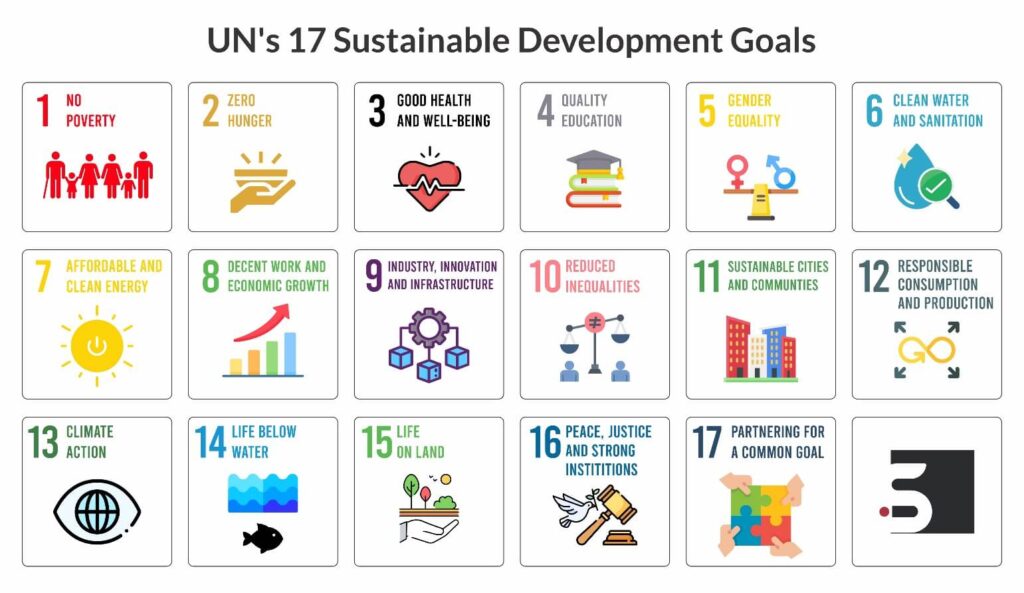The Future of IP in Circular Economy
This article is developed based on the 6th Future of IP Leadership Talk with Sagacious IP team by Yaron Damelin – the CEO of Focus IP and a leading IP Management consultant based in Israel. The article expands on Yaron’s talk on the topic “Circular Economy.”
According to a World Bank report, if current trends continue, the annual global waste creation will reach 3.4 billion tons by 2050 – a 70% increase from 2018. This scary number emphasizes the need to radically change how our economies work and to make a hard shift to a more sustainable model. Moreover, the emphasis on sustainable living and manufacturing extends to eco-efficiency and green manufacturing concepts, such as the circular economy, an industrial system intended to be restorative or regenerative. Intellectual property rights (IPR) are a critical component for establishing sustainable innovation as they structurally support firms in their transition to sustainability by removing institutional barriers, cross-industry dissemination, and conducting in-depth research on IPR concerns for the circular economy.
This article will discuss the idea of a circular economy, the role of intellectual property (IP), the future of green IP, UN sustainable development goals (SDGs), and more.
Table of Contents
Understanding Circular Economy
Today’s linear economy takes raw natural resources, converts them into products, uses such products, and then discards them – which is highly damaging and unsustainable. The circular economy, as a concept, emphasizes the policy of “Make, Use, and Return.” It aims to close the gap between manufactured and natural ecosystem cycles by encouraging the use of today’s commodities as resources for tomorrow. Hence, it embodies the idea of sustainable development.
A circular economy is based on the notion that there ought to be no product waste. We should aim to achieve this goal by making products built to last and optimized for a cycle of disassembly and reuse, making them easier to handle, re-purpose and renew. The circular economy model provides new potential for innovation and integration amongst the natural ecosystems, businesses, people’s daily lives, and waste management.
Now that we know about the circular economy, we will move forward to a comprehensive view of the relationship between the circular economy and IP, and how this relationship can be leveraged to attain a sustainable future.
Circular Economy and IP
Humans are addicted to growth – financial, political as well as social. But this race towards development has led to greater consumerism, which is no longer the best path forward. As we approach consumerism’s economic ceiling, it has become an increasingly polarized and destructive path to follow. The reality is that we require economies that enable us to thrive, irrespective of whether they grow or not. As the saying by renowned economist Kate Raworth goes, “A healthy economy should be designed to thrive, not grow.”
This new ambition challenges us to create economies that are regenerative and redistributive by design. This is where intellectual property comes into the picture! While open sourcing knowledge and sharing it with others can aid in harnessing technologies to reach everyone, which is encouraged wherever relevant; climate-related IP helps create an economic system and currency for incentivizing technology players to deeply cooperate in combating environmental challenges and work towards a healthy and sustainable future. Smart and constructive usage of IP assets can boost the adaptation and development of clean technology in all sectors and geographies.
Key Features of Sustainable IPTM
Change is inevitable, and it brings about innovation and creativity, leading to the creation of sustainable IPTM. It refers to both IP that contributes to and supports sustainability, and IP assets that are more economically sustainable, justified, and beneficial to the IP-owning entity. These IP assets are often essential for achieving maximum efficiency and a greener economy. As the world realizes and embraces the need to think about future generations, sustainable IPTM is making progress. However, it is not replacing the traditional model. By implementing sustainable IPTM, we are just adding to the existing approach, rather than focusing and complementing it to further the sustainability agenda. Following are some key features of sustainable IPTM:
- Transparent ownership to facilitate cooperation.
- Uses IP to accelerate sustainability by regulating and incentivizing.
- Enables the creation, adaptation, and distribution of green technology.
- IP is intended to drive innovation that is meant to be shared.
- Includes social sustainability and Environmental, Social, and Governance (ESG) screening.
- Helps achieve zero carbon mission by building recyclable products with new materials. Hence, fueling the need for new technology, and patents to protect such enhanced functionalities.
- Inventions revolve around available/recyclable/sustainable materials.
- Makes it a win-win situation for everyone, including the government, consumers, and corporations.
- The development of new products requires a significant investment in IP. Sharing it with everyone for a fair license can help create more impact from the innovation.
- Trade secrets are the biggest obstacle. There is an increasing need to urge corporations to open trade secrets to patenting and disclose IP to others for the greater good.
- Introduces a new paradigm in which customers are charged for typical, non-sustainable usage, and not for sustainable usage.
- Employs a business model that generates profits while providing social benefits. To achieve this, innovations are licensed at a minimal cost to establish social benefits and use these patents to keep market pricing in check.
We can see how adopting the sustainable model can benefit our economy. However, paving the road for sustainable IPTM still needs significant efforts in order to design a low-carbon future. In the following section, we will go through the relationship between sustainable IP TM and the new economy model.
Circular Economy and Sustainable IPTM
Resources, such as oil, metals, and polymers, are finite. Further, early disposal of products kills their life cycle and generates massive amounts of waste. Hence, we need creativity and innovation to use fewer materials. We must design items for long-term disposal and use the regenerative circular economy approach to resell, decompose, re-service, re-manufacture, de-member, and reuse them.
Due to a shortage of raw materials, new business models have been cast into the spotlight. For example, the Turn Two Model suggests that the producer stays responsible for the product and raw materials, from consumption to usage. It forces us to rethink ownership and shift our attention to performance. When we separate the value of the raw materials from the product, then the consumer does not need to pay for the raw materials but only for the performance. Currently, the consumer pays for it all and disposes the products early.
In another painful example, the fashion industry and its ever-evolving trends have often been associated with massive unnecessary toxic waste. Therefore, proficient waste handling should be designed into its system. Clothing, for example, can be recycled by incorporating labels that can be scanned when the object is no longer in use. As a result, the goods return to the industry/producer, and the customers receive a rebate.
Sustainable IPTM development and commercialization still have a long journey to cover. The following four categories and related services are designed to help you get ahead of the curve in this new economy:

The United Nations Sustainable Development Goals have recently gained much traction, and they can have a huge impact on IP and IP practitioners. The next section discusses the same in detail.
IP and UN Sustainability Development Goals (SDGs)
The General Assembly, in September 2015, adopted the 2030 Agenda for Sustainable Development, which includes 17 ambitious Sustainable Development Goals to end poverty, protect the planet, and promote peace and prosperity. The new agenda emphasizes an inclusive approach to attain sustainable development for all, based on the principle of “leaving no one behind.” IP, like the SDGs, is multidimensional and contributes to SDGs by driving technological advances, education, business, and other areas.

Here is how mapping patents can impact United Nations Sustainable Development Goals, the SDGs with patents.
- Performance measurement and control: There are targets under each of the 17 UN SDGs that, if met, will achieve the relevant goal. These are global, universally applicable metrics complemented by regional and national indicators. They can be linked to scientific and technological advances expressed through patented innovations.
- Identification of technologies that match UN SDG targets and indicators: Users may gain insight into sustainable innovation in various fields worldwide by mapping advances in science and technology as indicated by patentable innovation against the UN SDGs. This unique proposition enables patent and non-patent specialists to quickly access and receive helpful knowledge in their areas of interest. This can lead to better decision-making and reporting, informed R&D, improved investment strategies, effective evaluation, and smoother business communication to educate employees, customers, and shareholders.
- Identification of opportunities and risks of sustainable technological development: Identifying growth opportunities in emerging markets is essential to gain competitive advantages in future-oriented technologies. It is also critical to support strategic decision-making for long-term investment and to understand the involvement and limitations in the process of development of sustainable technology. Further, tracking the progress of investments in sustainable R&D and technology over time can aid in distinguishing between the sustainable innovations that have had an impact and those that have not.
- Portfolio management and competitive landscape analysis: Increasing IP portfolio efficiencies and identifying competitive strengths and weaknesses can also help achieve the targeted goals. Defining country filing strategies, managing annuity costs, and uncovering pruning potential and cost-saving opportunities can also be beneficial.
- Identifying collaboration partners, M&A targets, and new entrants in related technologies: Patent research and analytics can be used to study the patent portfolios of acquisition targets. It helps to analyze innovation landscapes and technological fit to locate essential patents within portfolios. It also helps to determine crucial issues, such as average ages, life expectancy, or legal status.
Role of IP Service Providers in Circular Economy
This new economic model is bound to impact the world critically as it will affect energy, transport, manufacturing, supply chains, budgets, education, politics, academia, food security, conflicts, and economies. Undeniably, IP service providers will play a significant role in the adaption and expansion of the circular economy. An effective IP service provider must:
- Be proactive in leading the pack to support R&D and business strategy to meet the sustainability agenda.
- Open doors and minds to great new opportunities in working with the new economy to promote good-world policies.
- Build up service offerings to lead the charge in the new-age economy.
- Generate cutting-edge studies and analytics to support corporate IP Strategy.
- Help clients in this space to succeed in business and make a more significant impact.
The role of IP service providers is bound to increase in the circular economy to encourage more innovations. Here’s what IP service providers can do to facilitate the expansion of the circular economy:
- Geographical indicators (GIs) are IPRs that identify a product that originates from a specific geographical area and has a quality, reputation, or other characteristics that are essentially attributable to its geographical origin. IP services providers can promote these GIs to help distinguish businesses employing advanced, green products for customers to make better purchasing decisions.
- IP service providers should help advance, develop, lead and turn around the economies of developing nations, not just the developed ones.
- They can also help bring about a significant paradigm shift with the emergence of new stakeholders, such as youth, politicians, and ordinary people.
- IP service providers can look beyond IP ownership and consider who else benefits from the innovation.
- The world saw an unprecedented level of cooperation across public and private ecosystems despite the rapid and disrupted change. IP service providers can make this cooperation a norm to boost innovations.
- Identifying, protecting, and valuing core IP can help green tech companies invest in further R&D, and diffuse their tech through partnerships and co-initiatives.
- These service providers can also help raise growth capital with IP as collateral in order to accelerate market entry.
- IP consulting companies can facilitate joint green initiatives by ring-fencing, valuing IP, and committing to the relevant IP.
- Climate change adaptation will be necessary to remedy climate-related damage. The Cooperative Patent Classification (CPC) system was launched in 2013, with the addition of section Y, where class Y02 represents innovations or applications for climate change adaptation. IP service provider’s expert in the domain can be hugely beneficial for companies innovating in the space.
- At COP26, the alternatives for transferring mitigation actions between countries and private parties were defined to open the possibility for market mechanisms to facilitate the implementation of mitigation measures. IP service provider’s can aid in increasing technological development to align with sustainable development in the coming years.
Conclusion
The world needs fully sustainable, closed-loop systems in which resources are reused, recycled, re-purposed, re-generated, and re-distributed wherever feasible. We can close the loop and create a truly circular economy by beginning to perceive waste as a resource of equal or greater value than those used to make it. The circular economy can also improve customer satisfaction and loyalty by making them feel proud of their purchasing choices, and IP rights can significantly help in moving industrial sectors toward more sustainable models. Please visit our Future of IP page to learn about our other Leadership Talks and insights into the latest developments in the intellectual property space.
– Yaron Damelin (Global Advisory Council Member) and the Editorial Team
Having Queries? Contact Us Now!
"*" indicates required fields




